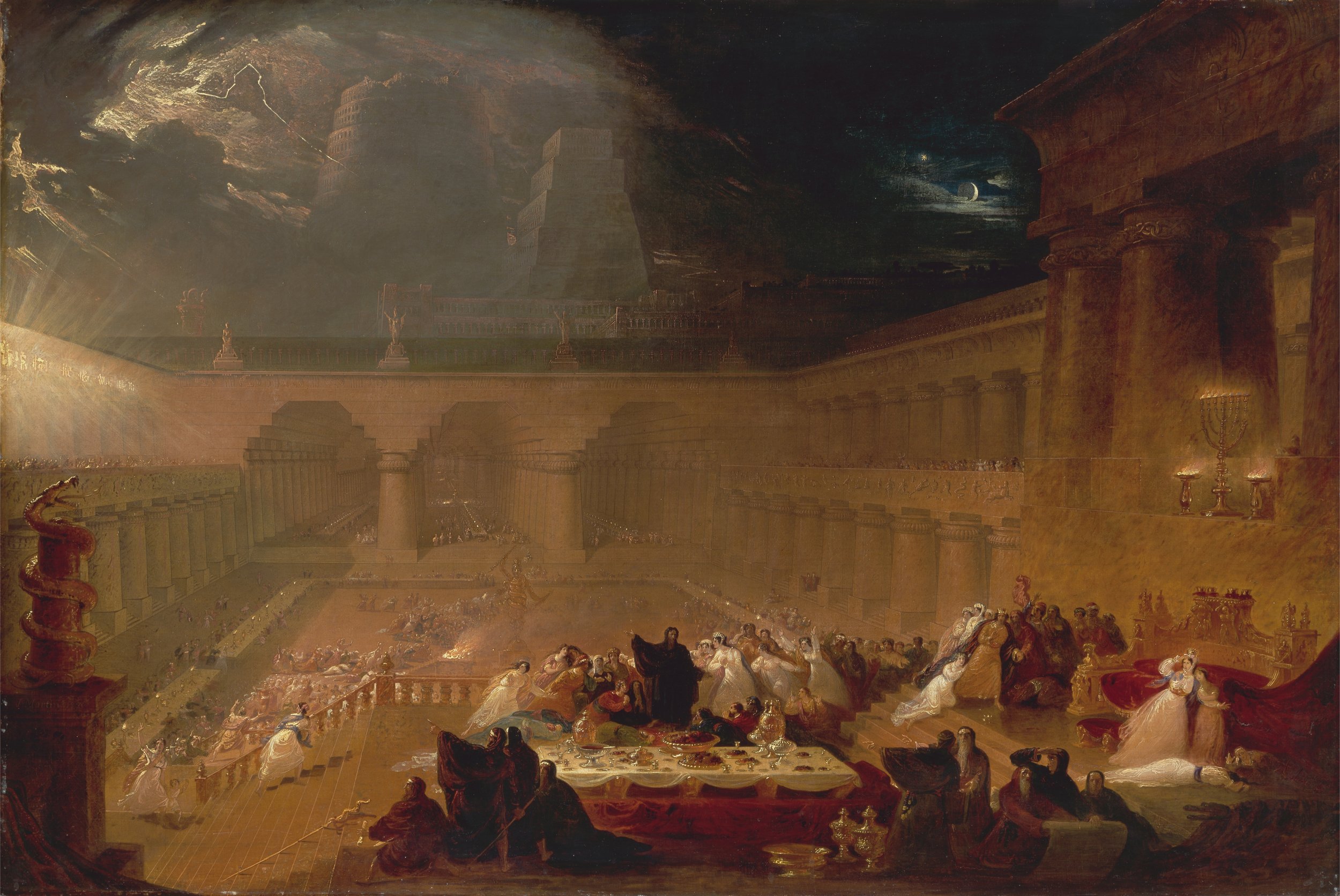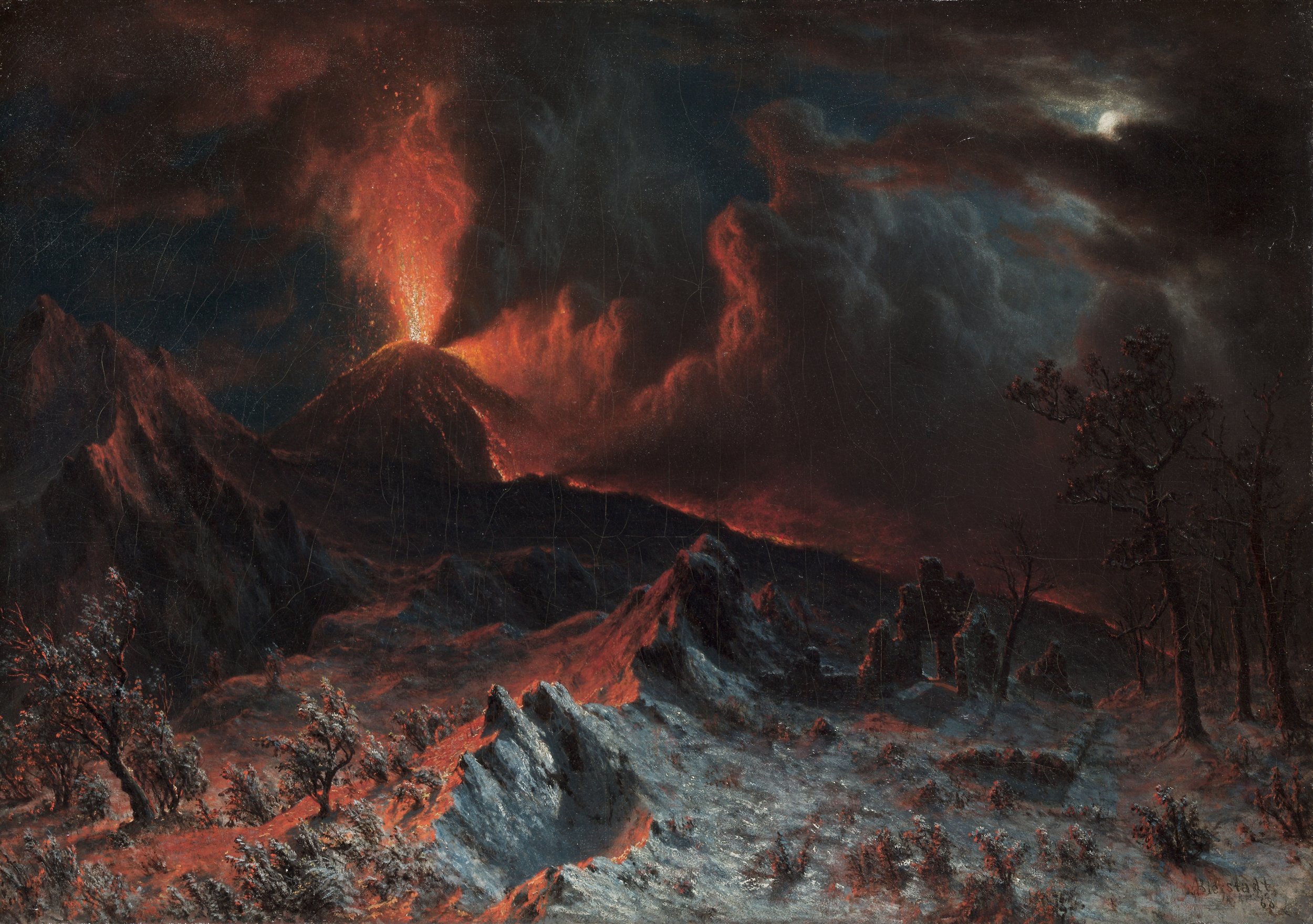Holy Weirdness

Holy Weirdness
Josh Tiessen
“I saw the Lord, high and exalted, seated on a throne; and the train of his robe filled the temple. Above him were seraphim, each with six wings: With two wings they covered their faces, with two they covered their feet, and with two they were flying. And they were calling to one another:
“Holy, holy, holy is the Lord Almighty;
the whole earth is full of his glory.”At the sound of their voices the doorposts and thresholds shook and the temple was filled with smoke.” (Isaiah 6:1-4 NIV)
I descend from a holy heritage of Christian martyrs, pastors and missionaries, who dedicated their lives to serving the Lord and ministering to people. I was born in Moscow, Russia to Canadian parents who taught at a Christian university, training young pastors for ministry in a country healing from the brutality of atheistic communism. From as young as I can remember, I believed in God and wrestled with the big questions of life. As I grew older my faith matured, and I sought to follow the way of Jesus with faithfulness.
I developed an artistic flair from the time I could hold a fat crayon in my little hand, spending long hours as a preschooler doing crafts with my Russian nanny. I requested stylish clothes and unusual haircuts—from the colored spiky-do of the early 2000s to the emo side-sweep of the 2010s. While friends bragged about their latest video game conquests on Halo, I quietly studied under a pet portrait artist who helped me stage my first fine art exhibition at the age of eleven. That Easter, instead of a chocolate bunny, I asked for The Passion of the Christ. I guess you could say I was an odd little duck.
My parents were not artists, but I was fortunate to fall down the rabbit hole into the art world by way of the wildlife art scene in Canada. By invitation, I was mentored at fifteen under the world’s most well-known wildlife artist, Robert Bateman. During this mentorship, I studied alongside a few Christian artists, who were some of the kindest and most supportive people I knew. In the following years, I frequently met Jesus-followers at regional art festivals. Throughout the United States at juried gallery shows I met accomplished artists of faith exhibiting traditional representational art.
By my late teens, I had found my own artistic voice and transitioned away from naturalistic wildlife art. I began juxtaposing animals in abandoned ruins, lacing my paintings with stories and symbolism. I called my style “narrative hyper-surrealism.” While my new work was accepted into contemporary avant-garde galleries in New York City, Los Angeles, and Portland, a new observation dawned on me: all the Christians had disappeared.
*
I have often been perplexed by the reality that though the Bible is chock-full with strange tales of talking snakes, seraphim covered in eyes from wing-to-wing, and dead men coming to life, most of the last century of Christian art is tame, predictable, and palatable. As for music, I wonder if anyone else has grown weary from the proliferation of worship songs with clichés about breaking chains, or the never-ending references to water. It’s easy to poke fun at kitsch-y Thomas Kinkade cottage landscapes and Greg Olsen biblical prints found in your local Christian bookstore. But in a different way this is also present in the millennial Christian culture, where the creative output is kinfolk-style minimalism with bible verses overlaying pastel tones. We merely replaced the sentimental with the slick.
I get it. In the hopes of making Christianity ‘seeker sensitive’ we want to present our faith in an accessible way—so we draw on safe themes for art and music, like purpose, freedom, and comfort, which resonate with the largely suburban culture in which our churches are located. The nagging question is: are we being dishonest and doing society a disservice by covering up the “holy weirdness” of our faith? While many churches in the West have attempted to make the ancient religion of Christianity more normal and relevant in order to appease a secular audience, trends now indicate that our culture is actually doing the reverse. The cool logic of naturalistic materialism is giving way to a tsunami of interest in the esoteric world of New Age. I have seen this most evidently in my artist colleagues who regularly incorporate Indigenous spirituality, psychedelic, and shamanist themes into their art. Maybe it’s time for us to rediscover and embrace the “holy weirdness” of Christianity.
*
In my escapades through art history, I’ve found many artists of faith who have integrated the wild and wonderful in their work. Perhaps we can look to them as guides, or at least conversational partners as we aim to reconcile an ancient faith with a postmodern world.
What I find fascinating is the kind of art that my non-Christian artist friends are attracted to — whether that be mysterious Byzantine icons or the organic whimsy of Antoni Gaudí’s Sagrada Família cathedral.
One of the most popular works, especially among surrealist painters, is Hieronymous Bosch’s The Garden of Earthly Delights (1495-1505). If you have not done so already, take a moment to gaze at this iconic triptych and notice your visceral reaction. Are you intrigued, repulsed, confused?
Hieronymous Bosch’s The Garden of Earthly Delights
At first glance, you might think this eccentric artist must have indulged in magic mushrooms, with all his bizarre and fantastical creatures. However, Bosch descended from a family of painters who were members of the Illustrious Brotherhood of our Blessed Lady, a conservative religious group that held to Christian belief and overtly critiqued the lavishness of the Catholic Church. According to historian Terry Glaspey, in his book 75 Masterpieces Every Christian Should Know, Bosch himself had a great familiarity with the Bible and wished to convey the reality of sin, judgment, and hell.
The meaning of The Garden of Earthly Delights is debated, but with the artist’s Christian context in mind it is not so challenging to decipher. The first panel presents the Garden of Eden, in which the Lord is communing with Adam and Eve (Gen. 3:8) showing the initial harmony enjoyed between nature, humans, and their Creator. The second panel depicts The Fall––humans multiply and fill the earth (Gen. 1:28), sin enters the world (Gen. 3), then humanity devolves into wickedness and indulgence (Gen. 6:5). The third panel projects the theme of apocalyptic judgment—sinful humanity left to its own devices turns chaotic and leads to self-destruction. While God’s holy judgement will be for the unredeemed who have followed their sinful nature, for the godly it will be a joyous occasion of God laying bare the earth in order to purify it for the New Creation (2 Peter 3:10-13).
A couple years ago, I was sitting in a friend’s living room surrounded by a pleasant group of Christian artists sipping tea and nibbling on biscuits. I thought it was the perfect time to express my appreciation for Bosch and his faith-filled work. To my dismay, I was met with disdain and apathy for this Early Netherlandish master.
What Christians fail to recognize is that Bosch created his own vocabulary of symbols, which many years later inspired fantasy and surrealist artists attracted to his aesthetic, inventing ghoulish creatures and imaginative worlds. However, unlike the fantasy genre which is often purely for entertainment value, Bosch used vivid metaphors for holy purposes to warn of the easy path toward self-indulgence.
*
Perhaps even more undervalued by Christians are the mystical saints of the Church, such as the 12th century benedictine abbess and polymath Hildegard of Bingen. With a deep respect for the Creator and creation, she was the first to study natural science in Germany with her work Physica and Causae et Curae. Like the mystical female artisan of Proverbs 8 delighting in creation, Hildegard loved music and pioneered the first musical, allowing nuns under her care to perform moral plays, even letting down their hair and wearing colorful dresses. She experienced multiple visions throughout her life, recording them in her theological volume, Scivias. She also directed artistic illuminations to bring her unusual visions to life, depicting themes of creation, incarnation, the new heavens and the new earth, combining these with eastern mandala motifs in vibrant hues.
While Hildegard was almost lost to the sands of time, her life and work has been re-discovered. What made her weird in her day, namely being a female theologian and nature mystic, is now intriguing. Through her writings, she has helped contemporary Christians reconnect to the feminine aspects of embodied living and the sacredness of nature. Yet, Hildegard was far from a fourth-wave feminist or syncretistic nature-worshiper, showing that outliers can be sincere followers of Christ and remain theologically orthodox.
The influence of Christian mystics has endured over the years. In fact, while many modern artists of the 19th-20th centuries eschewed organized religion, those interested in faith often drew from the mystical tradition. (My colleagues William Dyrness and Jonathan Anderson have catalogued this in their book, Modern Art and the Life of a Culture.) One of these artists was the surrealist painter Salvador Dalí. While best known for his wild lifestyle and dream-inspired paintings of melting clocks and whimsical figures, he was also drawn to the visions of St. John of the Cross. According to historian Matthew Milliner’s “Artists Gone Mild” Tower Talk, an entire catechesis can be taught based on Dalí’s works of the incarnation, eucharist, crucifixion, and ascension. While visiting the National Gallery of Art in Washington D.C. many years ago, I was surprised to encounter a monumental painting by Dalí of the Last Supper, adorned with his mystical hallmarks.
*
Alongside my full-time work as a professional artist from the time I was sixteen, I studied very part-time toward a Bachelor of Religious Education in Arts and Biblical Studies, taking me nine years to complete. While I cherished the time with my professors and was thoroughly enriched by the high quality education I received, I struggled most with classes on the Bible. I was troubled by the 19th-20th century form critics who sought to “demythologize” Scripture. They claimed that anything supernatural was simply a later addition, and that when you looked “behind the text” only the natural remained. For a season I experienced great consternation when reading the Bible. Were the critics right? Was the Bible just a work of legend from a pre-scientific age?
Around that time, I discovered the Bible Project, a series of animated videos on YouTube explaining biblical books and key themes. They approach Scripture on its own terms, as both fine literary art and divine inspiration. They admit it’s weird, in fact “holy weird” (I recommend their trippy “Spiritual Beings” video series, a careful and imaginative exegesis of the ancient supernatural worldview that inspired Scripture). The co-founder, Dr. Tim Mackie, is the only Ph.D. I know of who skateboards to work. Curiously, the Bible Project is based in Portland, Oregon, known for its idiosyncratic blend of weirdness and post-Christian culture. The Bible Project spoke to me as an artist and intellectual, and helped rehabilitate my love for the Bible. I am heartened that “holy weirdness” is being embraced by some Christian artists and thinkers of our day.
*
I recently attended a megachurch for a few years, where I experienced a sub-culture in which sharing doubts and grappling with questions was discouraged, prefering cookie-cutter Christians who give pat answers and pray predictable prayers. Not surprisingly, I found few artists there. Great art doesn’t flourish in a culture of creative and theological homogeneity. Embracing the weirdness of our faith through art can be disarming for people who generally think religious art (not to mention evangelism) is about selling something that comprises propositional truths which cannot be questioned.
As I alluded to earlier, in my subject matter as a hyper-surrealist oil painter, I often juxtapose animals into abandoned remnants of human civilizations, highlighting irony and parody, the hallmarks of postmodern art. This is best seen in my thematic body of work Streams in the Wasteland (2015-2021), inspired by nature’s reclamation in the book of Isaiah. I write about why my work has been accepted in the mainstream art world in spite of the fact that it draws upon biblical and theological themes. In my recently published art monograph Streams in the Wasteland, the final painting in the series, Agnus Dei, was inspired by the Lamb of God symbolism in Isaiah 53, echoed in Revelation 5, where all the creatures on earth and in the sea encircle the throne, praising the Lamb who was slain. Curiously, animals seldom appear in Western (Christian) art, despite a plethora of biblical references. I suspect it is because an interest in animals has been seen as childish, reminiscent of children’s storybooks and antithetical to grown-up, sanitized Christianity. However, as Balaam’s donkey did, could creation itself jolt us to turn to our mysterious Creator? (Numbers 22:21-39).
Josh Tiessen's Agnus Dei
The value of humor and irony in the current cultural ethos finds its roots in the writings of the Christian existentialist philosopher Søren Kierkegaard, who recognized that faith is filled with paradox and the “virtue of the absurd.” Our culture has become wary of confrontational truth claims because of their associations with abuses of power at the hands of traditional religious institutions and political ideologues. As Mark Shaw writes in Work, Play, Love, “In the postmodern world the best way to subvert the pretensions of power is to mix and match form and content. The “trivial” is freed to serve the truth, and the truth is liberated from the hands of the powerful or learned to partner with the playful to accomplish a common purpose.”
In an age skeptical of objective universal truths, might an approach through art that infuses the strange, ironic, and humorous provide some levity for generally taboo subjects like the meaning of life and opposing belief systems? What might Christian communities miss if we sanitize the Bible, making it less weird? To me that seems dishonest, especially as I strive toward authenticity in my own work. Granted, there are risks in embracing a “holy weirdness”—we could be mocked or misunderstood, or we may be tempted to compromise theologically, trying to blend Christianity with Hindu, Buddhist, or the New Age iconography currently in vogue.
In order for “holy weirdness” to flourish, we need to be shaped by the totality of Scripture. According to The New Bible Dictionary, holiness refers to consecration of a person, day, or place for a divine purpose. While God is the paragon of holiness, as the perfect embodiment of ethical purity He “disciplines us for our good, that we may share in His holiness” (Hebrews 12:10 NIV, emphasis added). In his teaching series “Future Church” John Mark Comer asserts that while the word holy sounds outdated, accruing shameful baggage for many people, it’s too important a word to abandon. He goes on to say that in the New Testament the word for holy, hagios, means unique, special, or different, but can also be translated “weird.” We must submit to living differently, in order that the art we make be likewise a participation in God’s holiness. In addition to Scripture, we can look to mystical artists throughout church history like Hieronymous Bosch and Hildegard of Bingen, to guide us on our artistic journey. For accountability, it is important to be part of a local community of believers who not only affirm our gifting but are there to “reel us in” if needed.
While my proposal of “holy weirdness” may be risky, we are called to engage our generation in their native tongue of doubt and dialogue—prioritizing the dialectic over the dogmatic. The days of “easy Christianity” that blends into the culture are quickly passing by, and we are already perceived as weirdos in our society. The arts need not be the Church’s public relations arm presenting a predictably sanitized faith. Rather, as artists press into the mystery of our ancient faith we can trust God to use what the world may deem as ‘foolishness’ to further his mission of redeeming culture for his glory (1 Corinthians 1:21).
Admittedly, I struggle on the lonely road of non-conformity to the monolithic Christian arts culture, and I puzzle as to why there are so few Christians in the contemporary art world. But I have come to realize that I am called to take the path less traveled, not unlike some of the historical artists mentioned above. To be sure, it is a solitary path and I often feel equally out of place in the Christian culture and the contemporary art world, with very little overlap in between. Perhaps “holy weirdness” is a bridge where both communities could meet. Contemporary artists of our day are already hanging out on the fringes, waiting for the Church to embrace an ancient-future aesthetic.
Josh Tiessen
Artist & Writer
Josh Tiessen is a professional fine artist, speaker, and writer based in Stoney Creek, ON. He has had solo exhibitions in galleries from New York to LA. His latest art monograph book, Streams in the Wasteland, released in fall 2021. www.joshtiessen.com
Photography by Daniele Collucci






